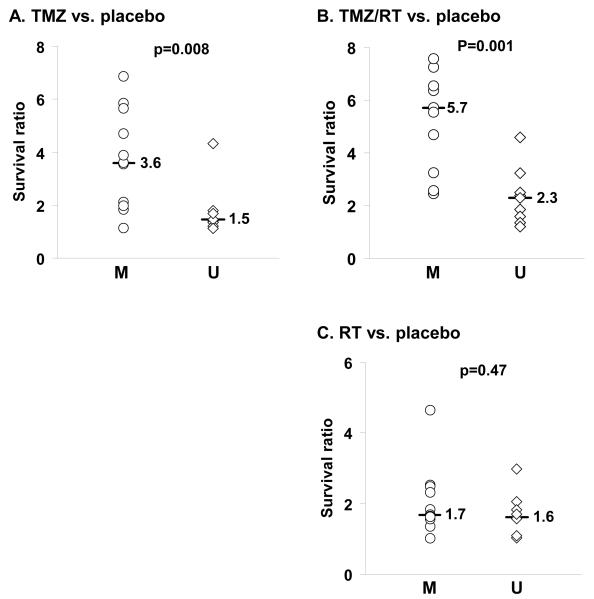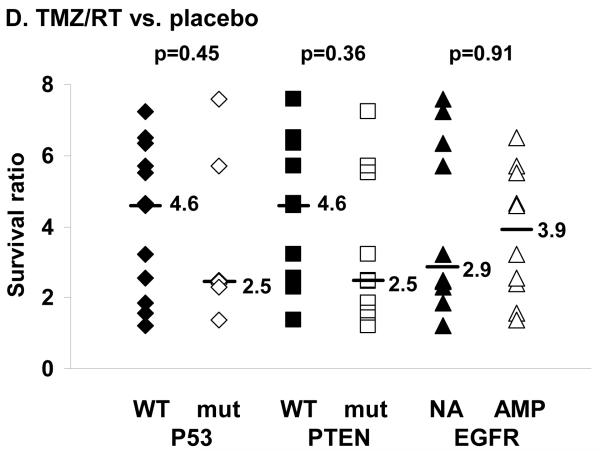Figure 2.
Survival benefit from therapy relative to MGMT, EGFR, p53 and PTEN status. Twenty GBM xenograft lines were evaluated for response to radiation therapy (RT) and temozolomide (TMZ) alone and in combination. For each xenograft line, mice with established intracranial tumors were randomized to treatment with placebo/sham RT treatment, RT (2 Gy twice daily × 5 days), TMZ (66 mg/kg/day × 5 days), or concomitant TMZ and RT (TMZ/RT). Mice were followed until reaching a moribund state, and the median survival for each treatment was calculated. To describe the efficacy of treatment relative to placebo, the survival ratio for any treatment was defined as the ratio of median survival for treated mice vs. median survival for placebo mice for each xenograft tested. In this way, a survival ratio of 1.0 would indicate no additional survival benefit for treatment compared to placebo, and a ratio of 2.0 would indicate a doubling in survival with treatment as compared to placebo. The survival ratio is plotted relative to MGMT methylation status (M - methylated; U - unmethylated) for A) TMZ, B) TMZ/RT, and C) RT. D) The survival ratio following TMZ/RT also is plotted relative to p53 status (WT -wild-type; mut - mutant), PTEN status (WT - wild-type, mut - mutant or homozygous deleted), and EGFR status (NA - non-amplified, AMP - amplified). The median survival ratio for a given molecular feature and the p-value from a two-sample rank sum test comparison between groups are shown for each figure.


